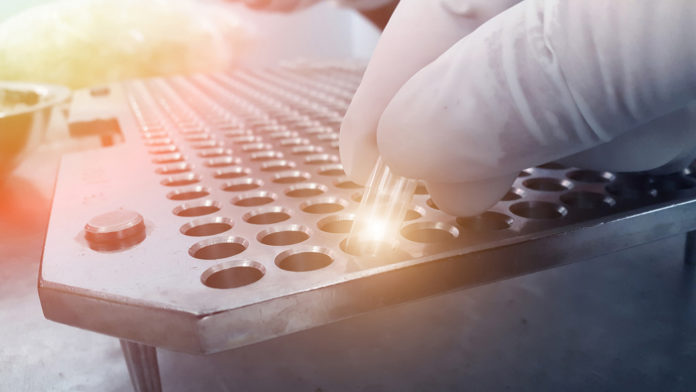In a column published in mg’s February issue (“Challenging and Enforcing Canna-patents”), we discussed the current uncertainties related to challenging and enforcing cannabis patents. Since then, the Patent Trial and Appeal Board (PTAB) issued a landmark decision in Insys Development Co. Inc. v. GW Pharma Ltd. (IPR2017-00503), a case challenging the validity of one of GW Pharma’s patents directed to the use of cannabinoids to treat epilepsy. The decision is important for canna-patent owners and third-party challengers alike in that it provides some clarity that inter partes review (IPR) proceedings (and likely other USPTO post-grant proceedings) are at least one option for challenging cannabis patents.
U.S. Patent No. 9,066,920
The IPR involved U.S. Patent No. 9,066,920 (“the ’920 Patent”), entitled “Use of one or a combination of phyto-cannabinoids in the treatment of epilepsy.” Insys Development Company Inc., a pharmaceutical company that focuses on cannabinoids and drug delivery systems, filed a petition seeking to cancel thirteen claims of the ’920 Patent as obvious (and thus unpatentable) based on three different combinations of prior publications.
After considering arguments from both Insys and GW Pharma, including holding an oral hearing, the PTAB found the first two claims of the ’920 Patent were unpatentable as obvious. However, the remaining eleven challenged claims survived and remain valid (and potentially enforceable).
Independent claim number one of the ’920 Patent (which the other twelve claims directly or indirectly depend from) recited “A method of treating partial seizure comprising administering cannabidiol (CBD) to a patient wherein the CBD is present in an amount which provides a daily dose of at least 400 mg.”
Dependent claim number two of the ’920 Patent recited “The method of claim 1, wherein CBD is present in an amount which provides a daily dose of from 400 to 800 mg.”
This decision is important for canna-patent owners and third-party challengers alike in that it provides some clarity that inter partes review proceedings are at least one option for challenging cannabis patents.
Before conducting the obviousness analysis, the PTAB considered the meaning of the claim term “partial seizure.” The claim construction analysis in IPR proceedings helps determine whether the claims read on prior art references. However, the PTAB found it was not necessary to construe “partial seizure” in order to determine the patentability of the challenged claims because GW Pharma did not dispute the asserted publications applied to the treatment of partial seizures.
The PTAB also determined the qualifications of a person of ordinary skill in the art (POSA) at the time of invention (the perspective from which the patentability of the claims is assessed during the proceeding). Insys and GW Pharma put forth different definitions of a POSA but the PTAB adopted Insys’s definition, which defined a POSA as a person with “an M.D. or a Ph.D. in pharmacology, chemistry, biochemistry, neurology, or in a related field in the biological or chemical sciences, is familiar with the 1981 International League Against Epilepsy (ILAE) classification of seizures, and is up-to-date on the developments in the field of treatment of seizures.” Notably, neither Insys nor GW Pharma (nor the PTAB) proposed a POSA should have any experience or familiarity with cannabis, further demonstrating this patent was treated like any other biopharma patent.
Regarding the obviousness challenge, Insys argued all claims of the ’920 Patent were obvious because the primary reference taught treatment of epilepsy with CBD, and a POSA “would have concluded that the claimed daily dosage of at least 400 mg of CBD is predictable, safe, and expected” in view of the combination of asserted references. In response, GW Pharma argued that, at the time of invention, CBD was “at best, a promising candidate for further study” and that a POSA would not have had a “reasonable expectation that CBD would treat partial seizures at all, let alone at doses of 400 mg or higher,” as claimed by the patent.
The PTAB found Insys met its burden to demonstrate claim number one (the broadest claim of the patent) and dependent claim number two were obvious over two of the three asserted combinations of references. Although the primary reference described administering a daily dose of CBD that was less than 400 mg to epileptic patients, the PTAB found the combination of asserted references, when read together, would have led a POSA to reasonably believe the amount of CBD could safely be increased to a dosage of at least 400 mg per day as recited in claim number one because, as of the time of invention, “CBD had been shown to be well tolerated in humans without any serious side effects or toxicities at doses up to 600 mg.”
Regarding claims number three to thirteen, Insys argued those claims were obvious over the asserted combinations of references for the same reasons that claims number one and two were obvious. GW Pharma argued Insys failed to identify where most of the elements of claims number three to thirteen were disclosed in the prior art and also did not present expert testimony to help explain why those dependent claims would be obvious. The PTAB agreed with GW Pharma on this point and found Insys failed to demonstrate claims number three to thirteen were unpatentable as obvious over any of the asserted combinations of references.
Although the PTAB deemed claims number one and two unpatentable, most of the ’920 Patent remained intact with claims that are still fairly broad relative to claim number one. For example, dependent claims number six and nine remain valid and potentially enforceable following the PTAB’s decision, and only further require beyond the limitations described in claim number one that “the CBD is present as a plant extract” and that “the CBD is present as a pure or isolated cannabinoid,” respectively.
As with any IPRs, the parties had the option to appeal the PTAB’s final written decision by either requesting a panel rehearing of the decision before the PTAB or appealing the decision directly to the U.S. Court of Appeals for the Federal Circuit. It appears neither party decided to appeal the decision.
PTAB seemed to treat this cannabis patent just like it would any other patent subject to an inter partes review challenge.
Questions answered
One key takeaway for canna-patent owners: PTAB seemed to treat this cannabis patent just like it would any other patent subject to an IPR challenge. The Schedule I drug status of cannabis was never an issue in the case.
Furthermore, as canna-patents continue to be enforced in the federal court system (including, e.g., one of the first cannabis patent infringement lawsuits underway in the U.S. District Court for the District of Colorado—United Cannabis Corp. v. Pure Hemp Collective Inc. (1:18-cv-01922)), the industry may expect to see even more IPR challenges of canna-patents, as well as increased patent application filings, following more clear direction about how canna-patent infringement cases will proceed in district courts.
With the decision issuance in Insys v. GW Pharma, the message to canna-patent owners and applicants seeking to protect their innovations continues to be the same: Obtaining canna-patents is highly valuable for companies in this industry and will serve as irreplaceable stakeholders as the market continues to normalize and expand.
And the stakes will continue to increase as federal courts and agencies weigh in.
Nicole E. Grimm is a partner and George “Trey” Lyons III and Brett W. Scott are associates with McDonnell Boehnen Hulbert & Berghoff LLP.










